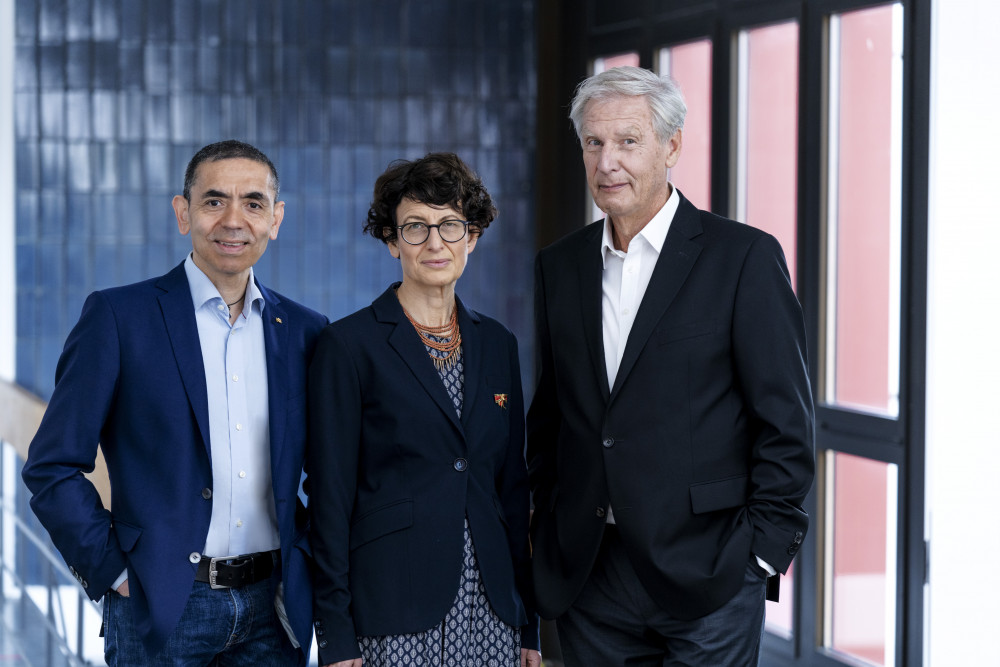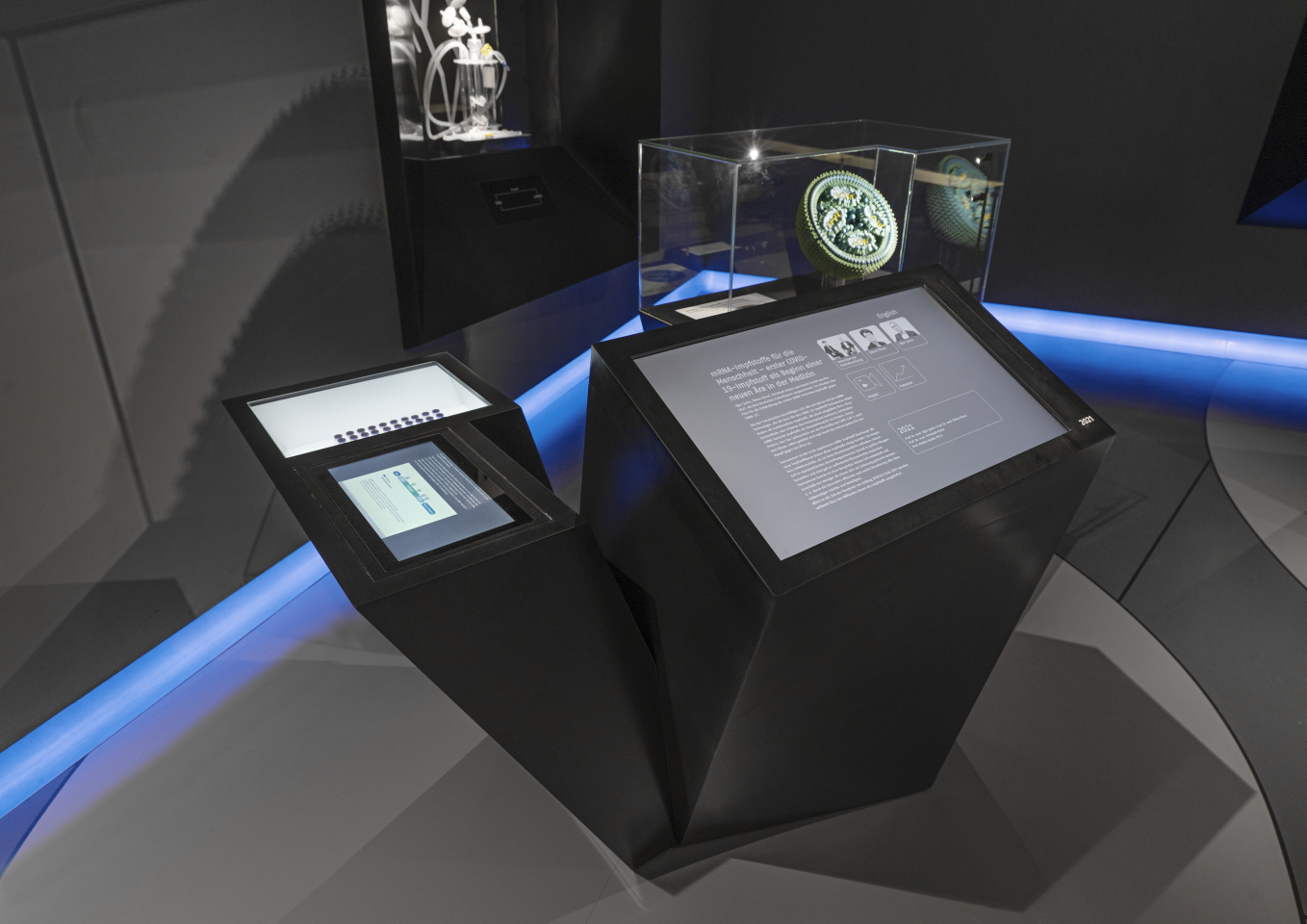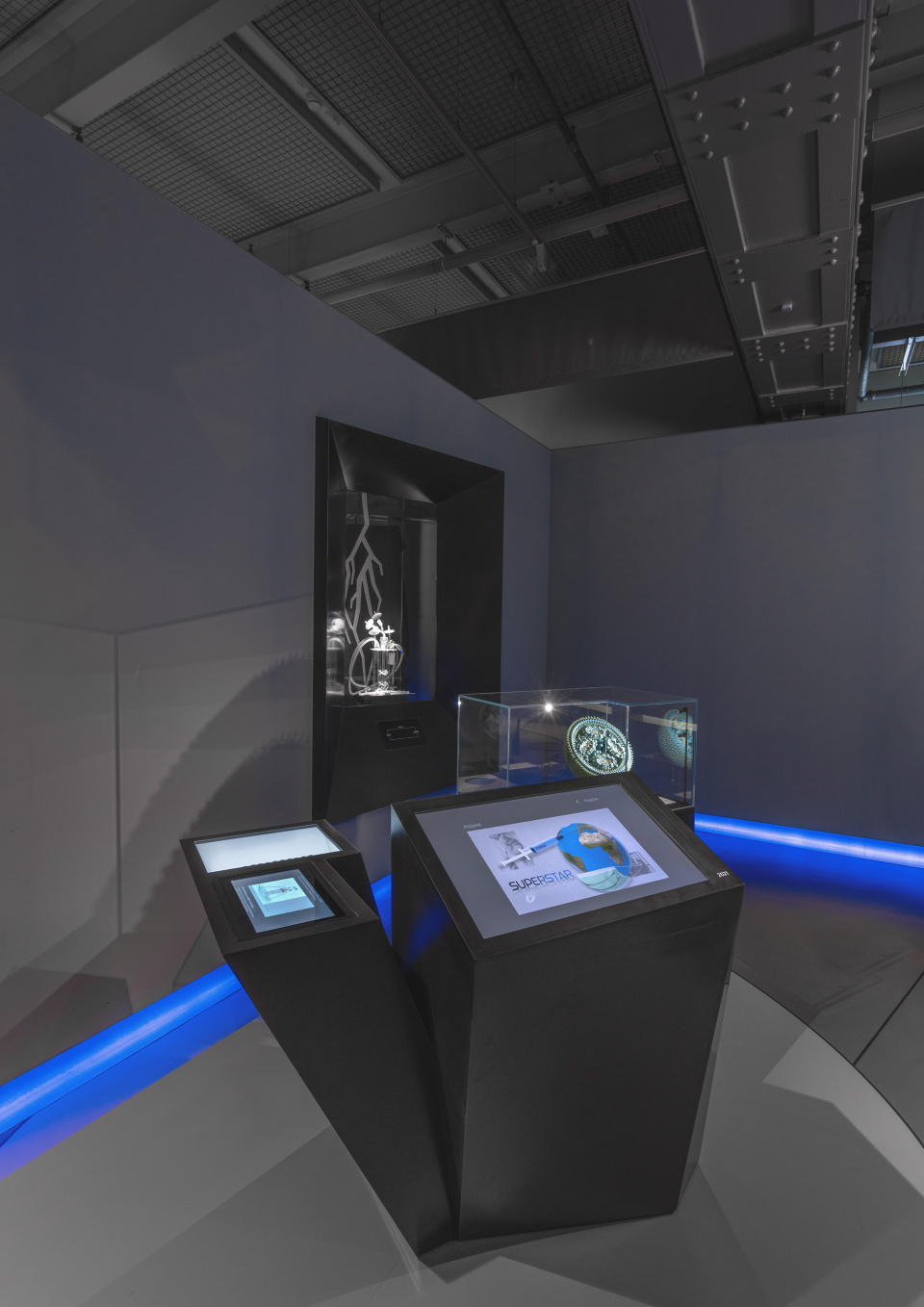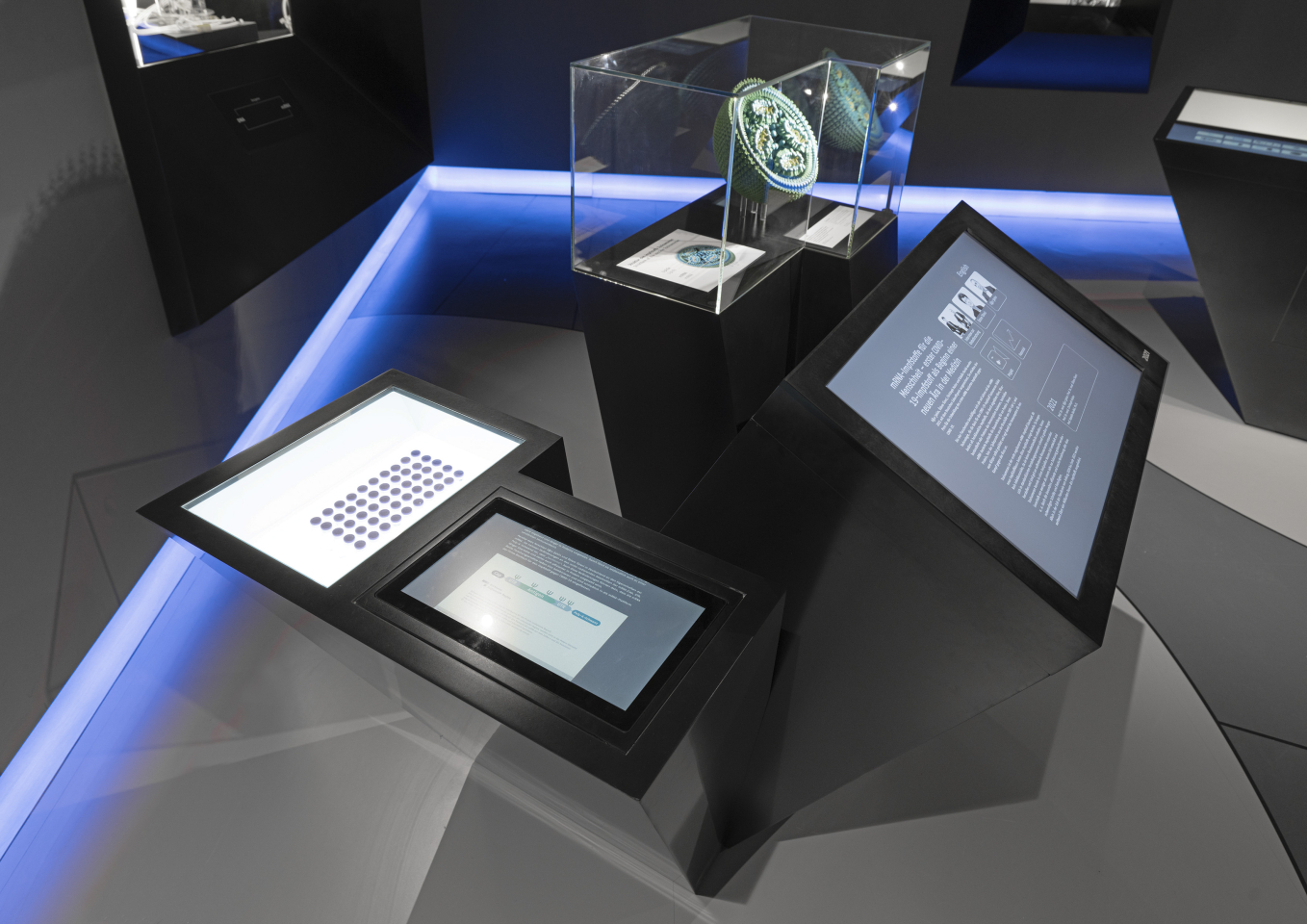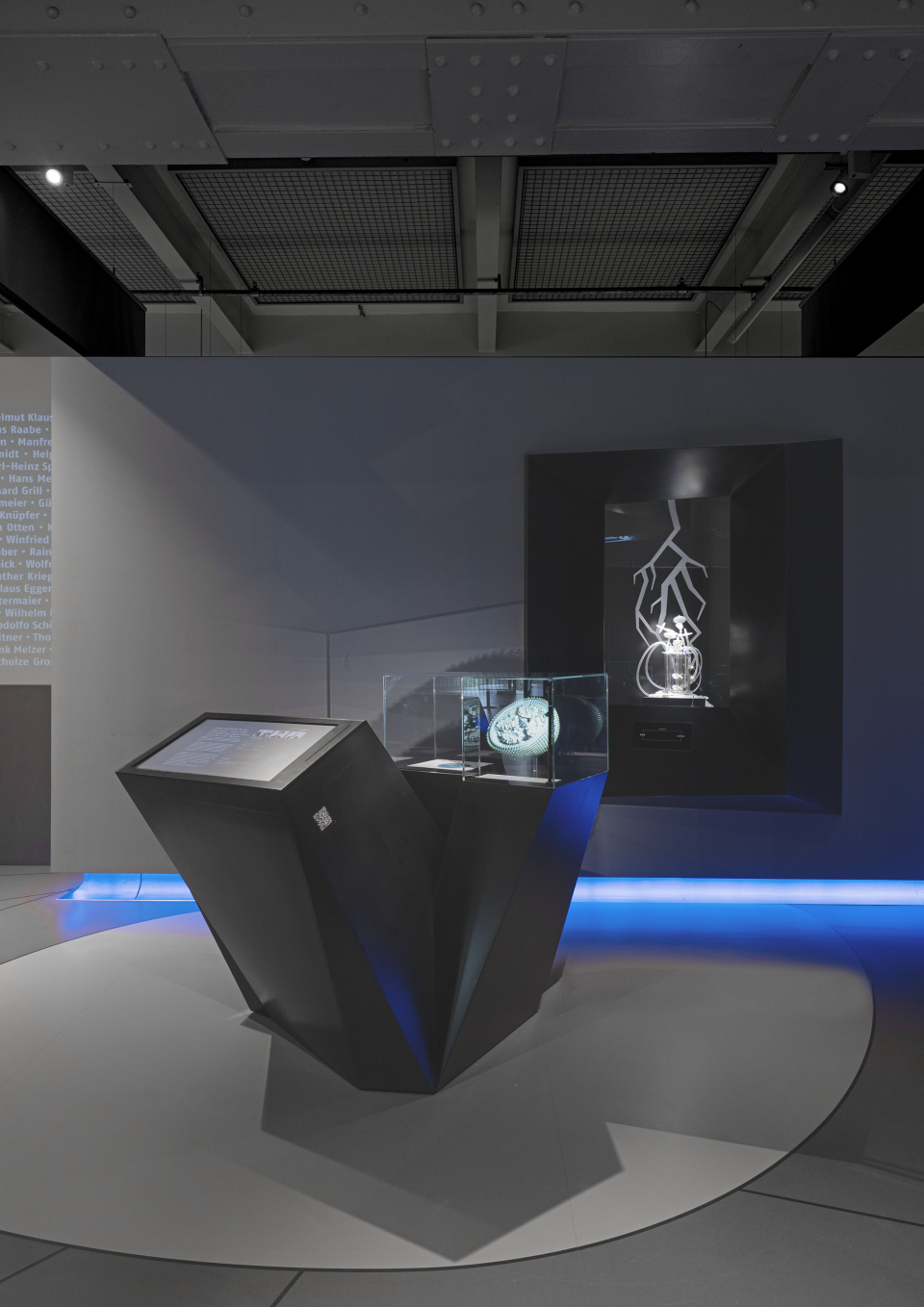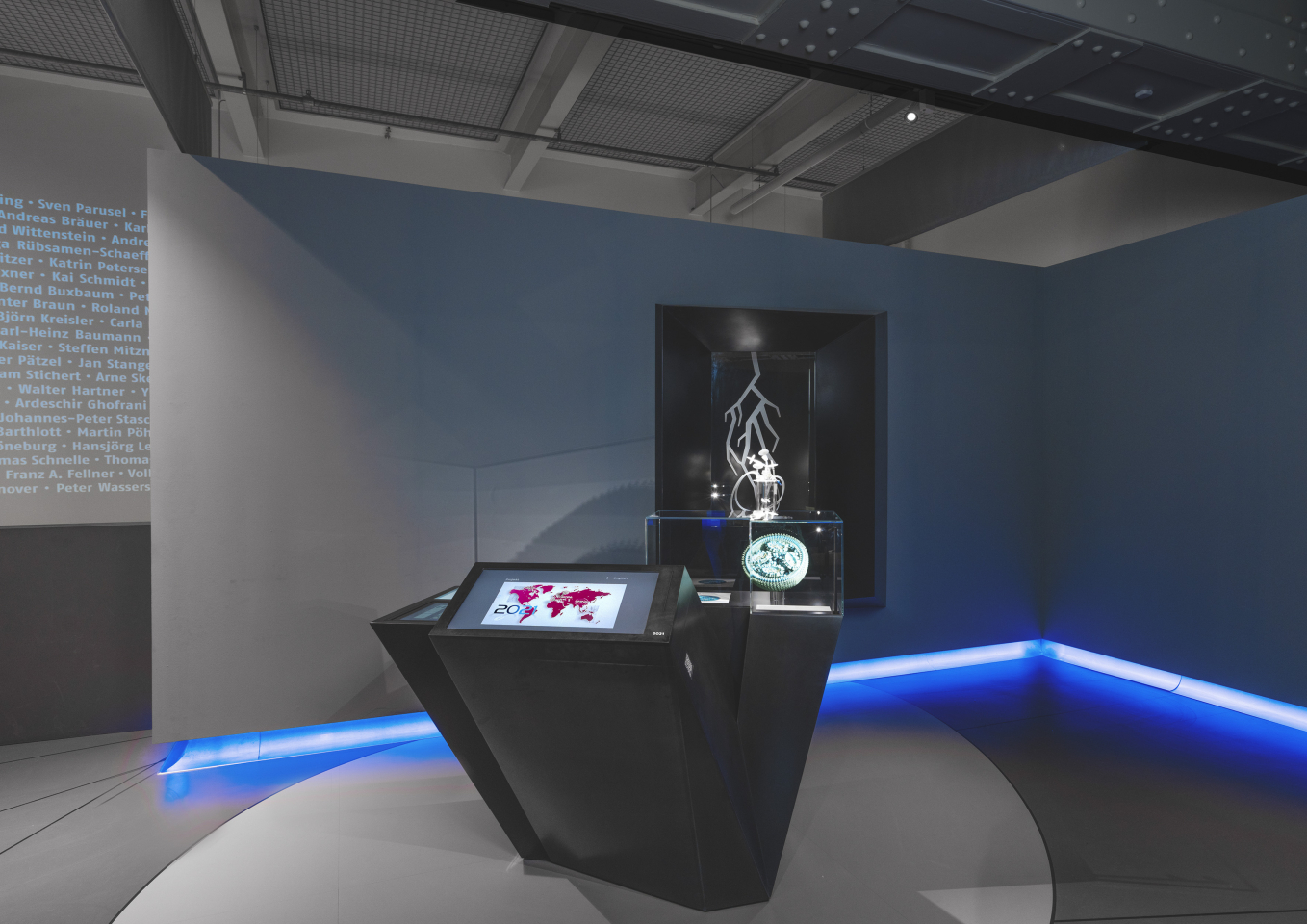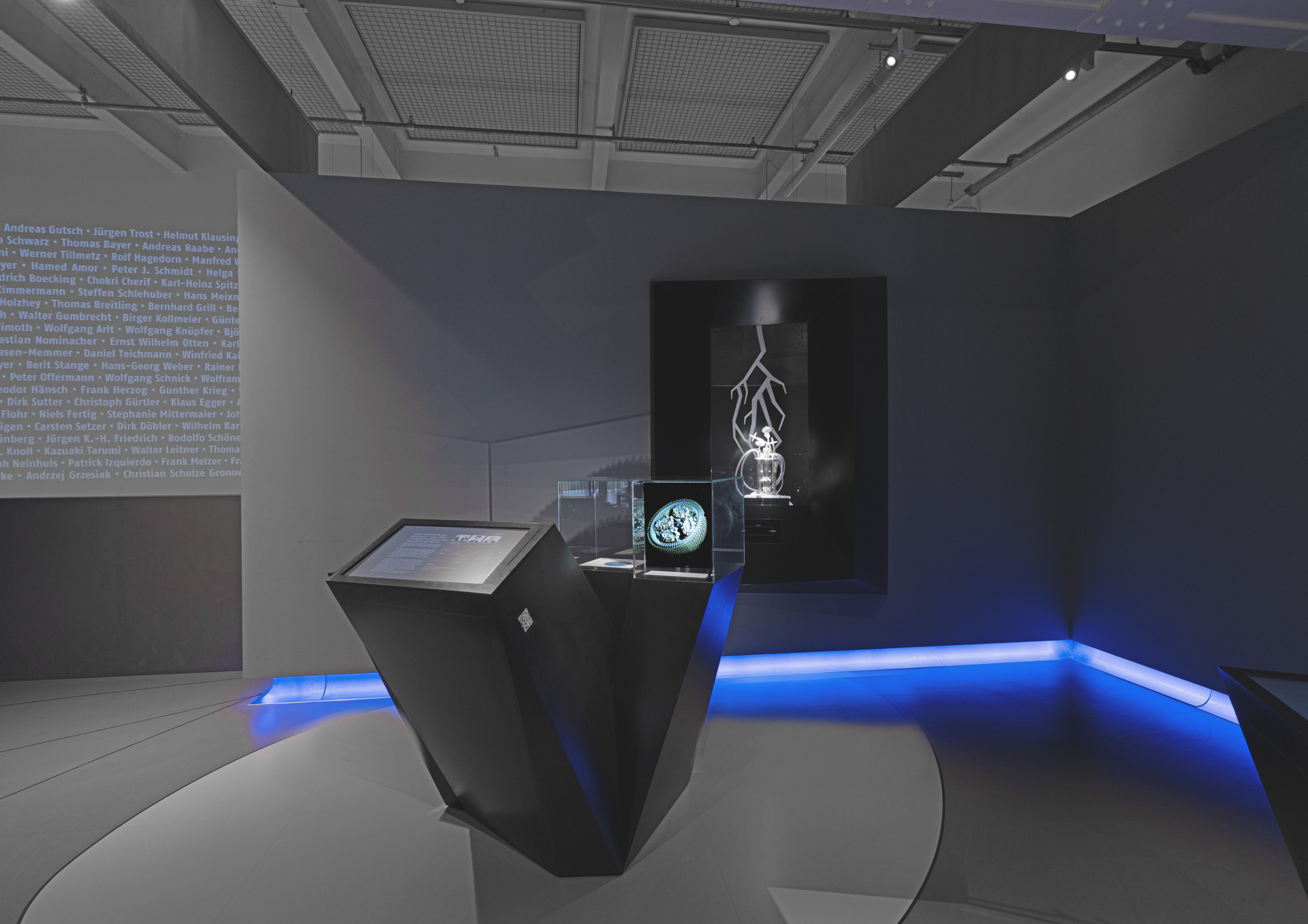
Exhibition design
The module of the winners 2021
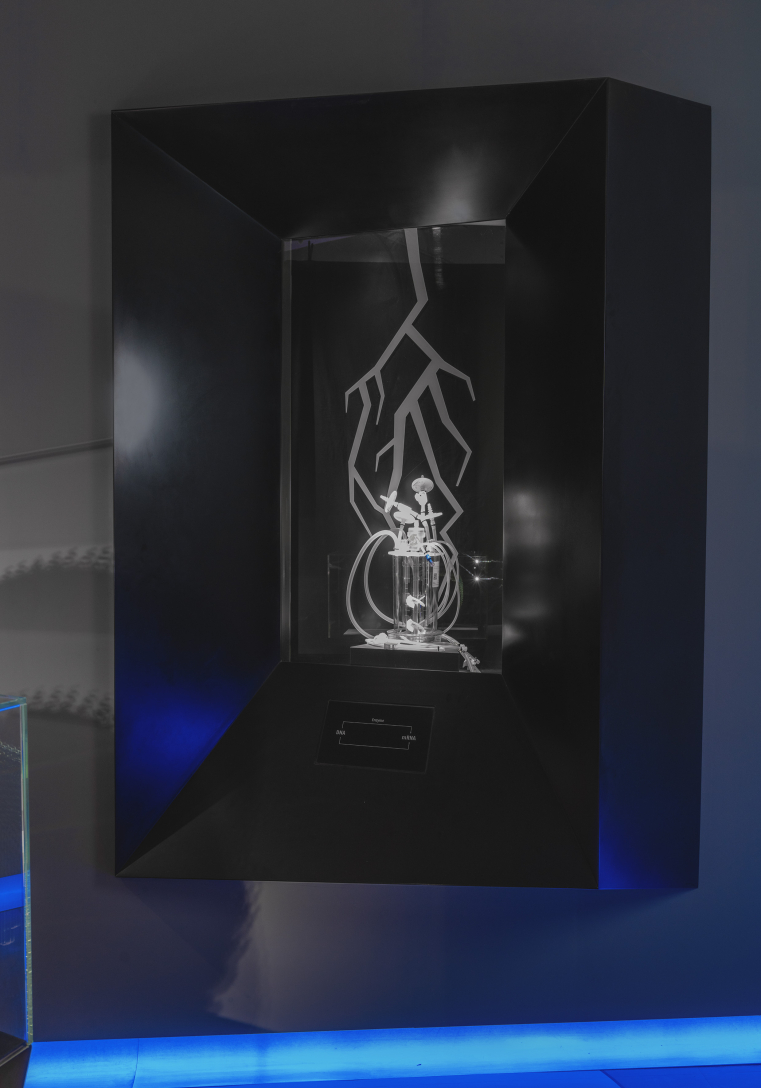
In the late 1980’s, Katalin Karikó recognized that artificially produced messenger RNA can be used to treat and target individual diseases. She succeeded in modifying a building block of synthetic RNA in such a way that the biomolecule can be used in medical applications. Uğur Şahin and Özlem Türeci adopted this approach together and refined the mRNA technology – supported by immunologist Christoph Huber. Their common vision was to establish a new form of treatment that relies on the body’s own immune system to heal diseases, principally cancer.
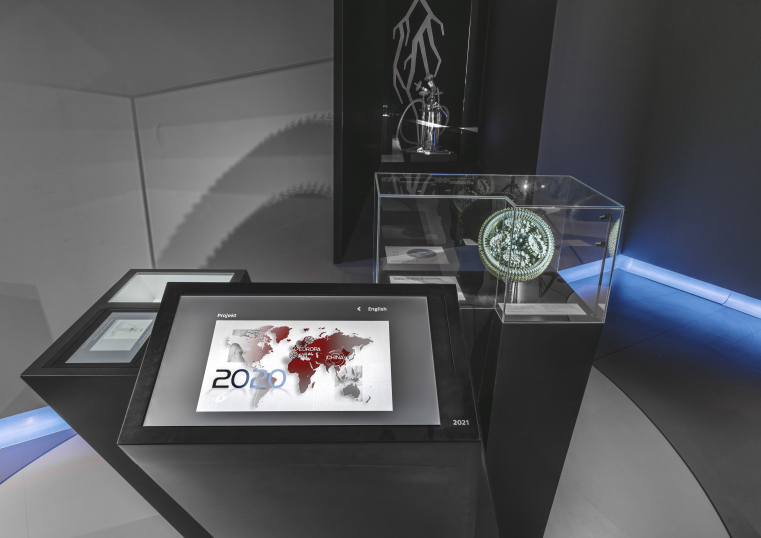
Those involved in its development called it “Lightspeed”, and that is also the central theme of the module. In the display case on the wall designed to intrigue visitors is the bioreactor in which the very first batch of vaccine was produced. A bolt of lightning projects out from it that symbolizes both the path of research from the idea to the project as well as the unbelievable rate of its implementation.

 Gebärdensprache
Gebärdensprache
 Leichte Sprache
Leichte Sprache


